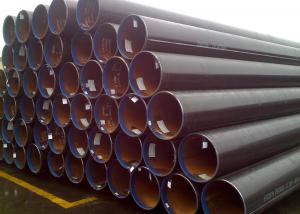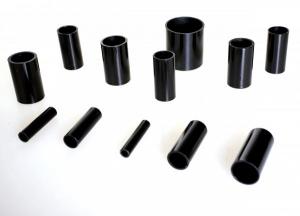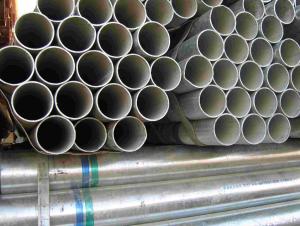High Quality API 5L LSAW Welded Steel Pipes For Oil And Natural Gas Industries
- Loading Port:
- China Main Port
- Payment Terms:
- TT or L/C
- Min Order Qty:
- 5 m.t. m.t.
- Supply Capability:
- Based On Order m.t./month
OKorder Service Pledge
OKorder Financial Service
You Might Also Like
High Quality API 5L LSAW Welded Steel Pipes For Oil And Natural Gas Industries
Products Type Of High Quality API 5L LSAW Welded Steel Pipes For Oil And Natural Gas Industries:
API 5L LSAW Welded Steel Pipes
Longitudinal Submerged Arc Welded (LSAW) Steel Pipe
API 5L SSAW Welded Steel Pipes
Spiral Submerged Arc Welded (SSAW) Steel Pipe
API 5L ERW Welded Steel Pipes
Electric Resistance Arc Welded (ERW) Steel Pipe
Specifications of High Quality API 5L LSAW Welded Steel Pipes For Oil And Natural Gas Industries:
Standard: API 5L, IPS, GB, BS, ASTM, JIS, ISO
Main Steel Tube Grade: A.B.X42,X46,X52,X56,X60,X70,L242、L290、L320、L360、L390、L415、L450(etc)
Dimensions:
OD: 406.4MM-1422MM (16"-56")
Thickness: 8MM-50.8MM depends on OD
Length: 5.8M-12M
Mechanical Properties Of High Quality API 5L LSAW Welded Steel Pipes For Oil And Natural Gas Industries:
|
Standard |
Grade |
(MPa) |
(MPa) | |||
|
Yield strength |
Tensile Strength | |||||
|
API SPEC 5L |
PSL1 | |||||
|
B |
≥241 |
≥414 | ||||
|
×42 |
≥290 |
≥414 | ||||
|
×46 |
≥317 |
≥434 | ||||
|
×52 |
≥359 |
≥455 | ||||
|
×56 |
≥386 |
≥490 | ||||
|
×60 |
≥414 |
≥517 | ||||
|
×65 |
≥448 |
≥531 | ||||
|
×70 |
≥483 |
≥565 | ||||
|
PSL2 | ||||||
|
|
Min |
Max |
Min |
Max | ||
|
B |
241 |
448 |
441 |
758 | ||
|
×42 |
290 |
496 |
414 |
758 | ||
|
×46 |
317 |
524 |
434 |
758 | ||
|
×52 |
359 |
531 |
455 |
758 | ||
|
×56 |
386 |
544 |
490 |
758 | ||
|
×60 |
414 |
565 |
517 |
758 | ||
|
×65 |
448 |
600 |
531 |
758 | ||
|
×70 |
483 |
621 |
565 |
758 | ||
Chemical Composition Of High Quality API 5L LSAW Welded Steel Pipes For Oil And Natural Gas Industries: (%)
|
Standard |
Grade |
C |
Mn |
P |
S |
CEV |
|
Max |
Max |
Max |
Max |
Max | ||
|
PSL1 |
- | |||||
|
B |
0.26 |
1.2 |
0.030 |
0.030 | ||
|
×42 |
0.26 |
1.3 |
0.030 |
0.030 | ||
|
×46,×52,×56,X60 |
0.26 |
1.4 |
0.030 |
0.030 | ||
|
X65 |
0.26 |
1.45 |
0.030 |
0.030 | ||
|
X70 |
0.26 |
1.65 |
0.030 |
0.030 | ||
|
PSL2 |
0.43 | |||||
|
B |
0.22 |
1.20 |
0.025 |
0.015 | ||
|
×42 |
0.22 |
1.30 |
0.025 |
0.015 | ||
|
×46,×52,×56, X60 |
0.22 |
1.40 |
0.025 |
0.015 | ||
|
X65 |
0.22 |
1.45 |
0.025 |
0.015 | ||
|
X70 |
0.22 |
1.65 |
0.025 |
0.015 | ||
Usage/Applications Of High Quality API 5L LSAW Welded Steel Pipes For Oil And Natural Gas Industries:
It is widely applied to line pipe in oil and sewage transportation, and it is used in Low pressure liquid and gassy transportation and it is also good Structure pipe in building and bridge field.
It also can be used for conveying gas, water and petroleum for oil and natural gas industries
Packaging & Delivery Of High Quality API 5L LSAW Welded Steel Pipes For Oil And Natural Gas Industries:
Packaging: with anti-rust painting and with plastic caps, or with PVC package, or hot dipped galvanized, or 3 PE coating
Delivery: by containers or by bulk vessel

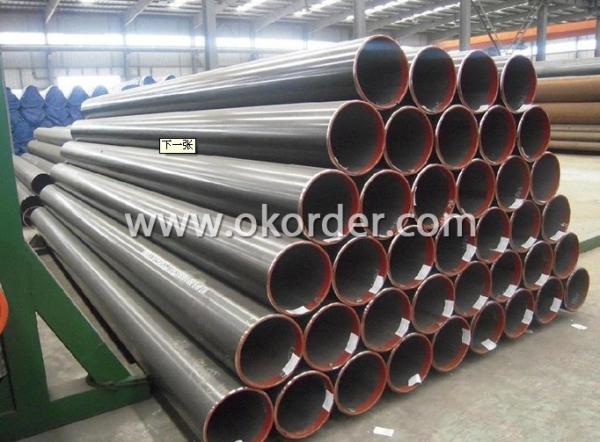
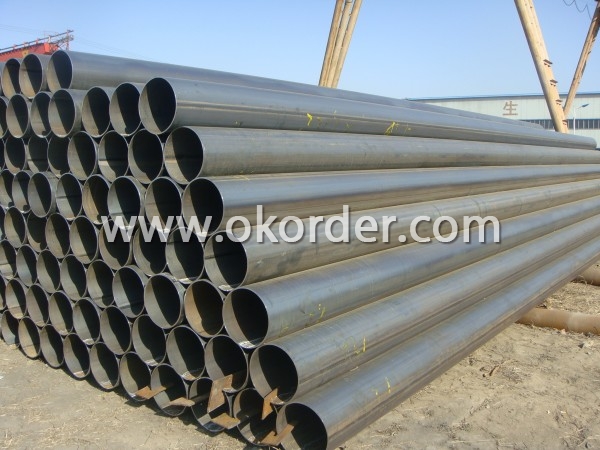
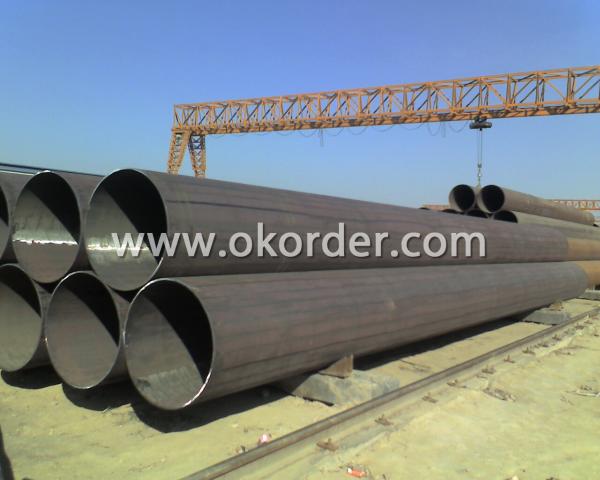

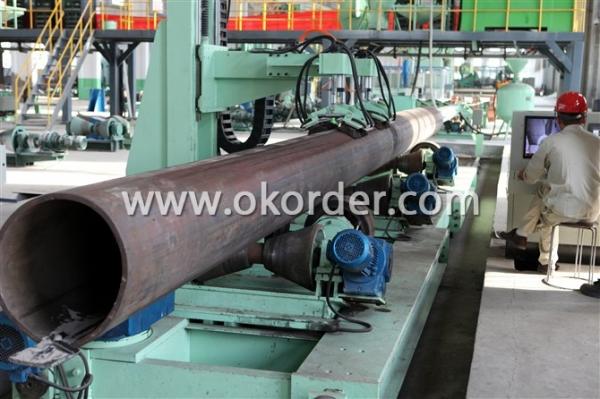
- Q:Can steel pipes be used for underground air supply systems?
- Yes, steel pipes can be used for underground air supply systems. Steel pipes are often used in underground applications due to their strength, durability, and resistance to external factors such as corrosion and impact. They can withstand the pressure and temperature requirements of air supply systems and can be easily installed underground. Additionally, steel pipes have a long lifespan, making them a cost-effective choice for underground air supply systems. However, it is important to consider factors such as soil conditions, potential for corrosion, and local regulations when selecting the appropriate steel pipes for the specific underground air supply system.
- Q:What are the different types of steel pipe joints for underwater applications?
- There are various types of steel pipe joints used for underwater applications, including welded joints, flanged joints, and mechanical joints. Welded joints involve fusing the ends of the pipes together using welding techniques, creating a continuous, strong connection. Flanged joints use flanges, which are flat, circular discs, to connect and secure the pipes together. These joints are commonly used in applications that require frequent disassembly. Mechanical joints, on the other hand, utilize mechanical devices such as couplings or clamps to connect the pipes. These joints provide flexibility and ease of installation and removal.
- Q:How are steel pipes protected against electromagnetic interference?
- Steel pipes can be protected against electromagnetic interference by using a variety of methods such as shielding, grounding, and insulation. Shielding involves wrapping the pipes with a conductive material, like copper or aluminum, which acts as a barrier to block electromagnetic waves. Grounding ensures that any stray electrical charges are safely directed away from the pipes, reducing the risk of interference. Insulation, such as coatings or sleeves, can also be applied to prevent direct contact between the pipes and potential sources of electromagnetic interference.
- Q:What is the difference between steel pipes and copper pipes?
- Steel pipes and copper pipes differ in terms of their material composition, with steel pipes being made of steel and copper pipes being made of copper. Steel pipes are generally stronger and more durable, making them suitable for high-pressure applications and underground installations. Copper pipes, on the other hand, have excellent heat conductivity and corrosion resistance, making them ideal for plumbing and heating systems. Additionally, copper pipes are more expensive than steel pipes but offer better resistance to bacteria growth. Ultimately, the choice between steel and copper pipes depends on the specific needs and requirements of the application.
- Q:What are the different standards for steel pipe manufacturing?
- There are several standards for steel pipe manufacturing, including ASTM (American Society for Testing and Materials), API (American Petroleum Institute), DIN (Deutsches Institut für Normung), and JIS (Japanese Industrial Standards). These standards define the specifications for various aspects of steel pipe production, such as dimensions, material composition, mechanical properties, and testing procedures. Compliance with these standards ensures the quality and reliability of steel pipes for different applications, ranging from construction and infrastructure to oil and gas industries.
- Q:How do you calculate the stress in a steel pipe?
- To calculate the stress in a steel pipe, you need to consider the material properties of the steel and the external forces acting on the pipe. The stress in a pipe is typically calculated using the formula: Stress = Force / Area First, you need to determine the force acting on the pipe. This could be due to external loads such as pressure, weight, or mechanical forces. You can calculate the force by multiplying the pressure or weight by the surface area on which it acts. For example, if the pipe is subjected to an internal pressure, you can calculate the force using the formula: Force = Pressure x Area Next, you need to determine the cross-sectional area of the pipe. The cross-sectional area of a circular pipe can be calculated using the formula: Area = π x (Diameter / 2)^2 Once you have determined the force and the area, you can calculate the stress by dividing the force by the area. This will give you the stress value in units such as pounds per square inch (psi) or newtons per square meter (Pa). It is important to note that the stress calculation assumes that the pipe is in a state of equilibrium and that the material properties of the steel are known. The material properties, such as yield strength and ultimate tensile strength, are used to ensure that the stress calculated does not exceed the maximum capacity of the steel.
- Q:How are steel pipes coated for protection against external elements?
- Steel pipes are coated for protection against external elements through a process called pipeline coating. This involves applying a layer of protective material, such as epoxy or polyethylene, onto the surface of the steel pipes. The coating acts as a barrier, preventing corrosion and damage from external factors like moisture, chemicals, and UV radiation. This protective coating ensures the longevity and durability of the steel pipes, even in harsh environments.
- Q:Are steel pipes resistant to vibration?
- Yes, steel pipes are generally resistant to vibration due to their inherent strength and rigidity. However, the level of resistance can vary depending on factors such as pipe thickness, design, and installation. Additionally, the presence of external factors like fluid flow or mechanical forces can also affect the level of vibration resistance.
- Q:How to descaling galvanized steel pipe?
- If the substrate is rusty, rust removal can be removed by acid leaching. If the coating is rusted, it can also be dipped in acid, but this will also remove the coating and make the base material more susceptible to rust, preferably by re plating and passivation
- Q:What are the safety precautions when working with steel pipes?
- When working with steel pipes, some important safety precautions to follow include wearing appropriate personal protective equipment (PPE) such as gloves, safety glasses, and steel-toed boots to protect against potential injuries. Additionally, it is essential to ensure proper ventilation in the work area to prevent the accumulation of hazardous fumes or gases. Using the correct tools and equipment, such as pipe wrenches and clamps, and following proper lifting techniques are crucial to avoid strains or back injuries. Regular inspection and maintenance of the pipes and equipment are also necessary to prevent any potential accidents. Lastly, it is important to receive proper training and follow established safety procedures to minimize risks and promote a safe working environment.
1. Manufacturer Overview |
|
|---|---|
| Location | Wuxi, China |
| Year Established | 1980 |
| Annual Output Value | Above Three Million To Five Million RMB |
| Main Markets | Main land |
| Company Certifications | Certificate of Conformity; API 5CT |
2. Manufacturer Certificates |
|
|---|---|
| a) Certification Name | |
| Range | |
| Reference | |
| Validity Period | |
3. Manufacturer Capability |
|
|---|---|
| a)Trade Capacity | |
| Nearest Port | Shanghai |
| Export Percentage | 30%-40% |
| No.of Employees in Trade Department | 1400 People |
| Language Spoken: | English; Chinese |
| b)Factory Information | |
| Factory Size: | 1500 square meters |
| No. of Production Lines | Above 14 |
| Contract Manufacturing | CNPC;Sinopec Group |
| Product Price Range | Average |
Send your message to us
High Quality API 5L LSAW Welded Steel Pipes For Oil And Natural Gas Industries
- Loading Port:
- China Main Port
- Payment Terms:
- TT or L/C
- Min Order Qty:
- 5 m.t. m.t.
- Supply Capability:
- Based On Order m.t./month
OKorder Service Pledge
OKorder Financial Service
Similar products
New products
Hot products
Hot Searches
Related keywords

